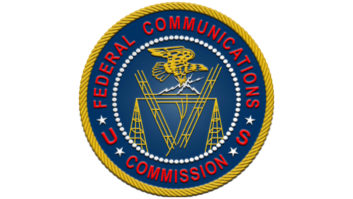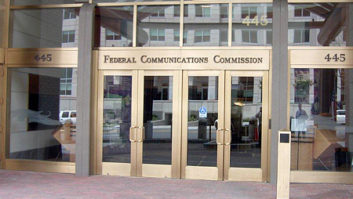The “repack” of television spectrum in the United States will be an important and ongoing reality for several years. It has implications for both TV and radio broadcasters.

Robert Weller
Robert Weller is vice president of spectrum policy for the National Association of Broadcasters and a former chief of technical analysis at the Federal Communications Commission. He addressed the topic in late October in keynote remarks at the Society of Broadcast Engineers National Awards Dinner in Denver. Excerpts:
The incentive auction was the culmination of what some economists call “market-based” economic policy. The idea was to develop a mechanism to allow market forces to drive transitions in spectrum.
Basically, it put some occupied broadcast spectrum up for sale to see whether the wireless industry was willing to pay more than what the broadcast industry valued the use of that spectrum. The Congressional Budget Office estimated that an “incentive auction” of television broadcast spectrum would net the government about $25 billion.
The way it works is this: First broadcasters decide how much spectrum they are willing to sell at some price, contingent on not causing too much interference. The original amount was $86 billion for 126 MHz. Then, see how much wireless companies would bid for 100 MHz of that 126 MHz. If the amount falls short of $86 billion, then reduce the amount of spectrum offered in order to lower the asking price and try again. If that fails, keep reducing the amount of spectrum offered until revenue exceeds costs by some target amount and you’re done. It sounds simple and attractive, right?

A slide from Bob Weller’s presentation. “Initial repack costs were dictated by government fiat,” he said, “and we now know have come up significantly short.”
Unfortunately, the incentive auction wasn’t that simple, and I can say that there were plenty of fights about various aspects of the auction that ended up making it really complicated. When your doctor tells you that your broken arm has a “complication,” you know to worry. If broadcasters and wireless companies were just trading dollars for spectrum, I don’t think there would have been a lot of fights. One of the main “complications” with the incentive auction is the repack.
The repack is the “magic” that allowed the FCC to buy just 175 stations but force almost 1,000 television stations to change channels. “Magic,” in this case, involved the FCC telling broadcasters not to worry, all of the repacking analysis is “under the hood,” and we don’t need to look there.
We all learned in grade school that there’s no such thing as “magic.” Forcing stations to change channels was the only way to make the auction work, and it most definitely was not magical or “market-based”! In fact, repacked stations had no say in the process, and there was no “market” to determine how many stations should be repacked or how much wireless carriers would be willing to pay to repack stations. Rather, initial repack costs were dictated by government fiat, and we now know have come up significantly short.
Policymakers should, and I believe will, ultimately ensure time and funds are sufficient to allow broadcasters to complete their moves — so that no viewer is left in the dark because a station is forced off the air or left to foot the bill for expenses that Congress did not intend and stations cannot afford. NAB is working hard to make sure that happens.
“MAKE BROADCASTERS WHOLE”
Fortunately, we now have an FCC chairman who “gets” broadcasting.
Ajit Pai has often related the story that his parents came to the U.S. with a “dream and a transistor radio.” He understands broadcasting more than any FCC chairman that we’ve had for a while. He understands that broadcasting is vitally important to thousands of communities around the country. He gets that broadcasting plays a vital and crucial role in preserving a healthy democracy. He gets that we provide access to emergency information and help keeping communities safe, and has actively supported including and activating FM receivers in mobile phones.
Hopefully, this FCC will do the right thing and make broadcasters whole as we change channels while avoiding further disruptions in the service we provide.
The incentive auction produced around $7 billion for the U.S. Treasury. That figure fell well short of most estimates, including the $25 billion Congressional Budget Office estimate. In terms of the gross bids, $20 billion was bid in total by wireless companies for 70 MHz of UHF-TV spectrum, now called the “600 MHz band.” By comparison, in the AWS3 auction, $45 billion was bid in total for 65 MHz of 2 GHz spectrum. In other words, the AWS3 spectrum was valued at more than twice the incentive auction spectrum.

“When the bidding ended last March, stations had three months to submit initial cost estimates and construction permit applications,” Weller told the SBE engineers in attendance. “It was immediately clear that the FCC had not adequately prepared for the post-auction repack.” The chart shows the multi-phase, 39-month repack process.
I think that price difference is a strong signal that wireless companies value capacity more than coverage, but nonetheless some policy makers are already pushing for more auctions of TV spectrum and globally our spectrum continues to be under attack. On the broadcast side, stations received as much as $304 million all the way down to zero dollars. We’re still speculating as to why that station walked away with nothing. About 400 stations got coverage haircuts, while about 300 stations actually saw gains. An unexpectedly large number of VHF stations have to change channel, and almost 200 stations got moved into T-Band, which means they may have to contend with another congressionally-mandated auction in a few years.
When the bidding ended last March, stations had three months to submit initial cost estimates and construction permit applications. It was immediately clear that the FCC had not adequately prepared for the post-auction repack. During those three months there were data outages, bugs found in the FCC analysis software and many other problems that effectively shrunk three months to perhaps two. Despite all those problems, all but about 25 stations out of the 987 being repacked submitted initial cost estimates and construction permit applications by the July 12 deadline. (And many of those 25 were stations that indicated they could not construct facilities on their new channel.) Over three months passed from the time the cost estimates were received until the FCC allocated money to pay the repacked stations.
Congress set aside $1.75 billion to reimburse broadcasters who are involuntarily repacked to new channels. It’s become clear that figure is short by hundreds of millions of dollars, and possibly even higher if you consider the innocent FM stations and low-power television stations that will be affected. The FCC’s initial allocation is just $1 billion — barely half of the expenses that have already been documented, even after a “haircut” of hundreds of millions of dollars in costs that the FCC admits are reasonable but merely inadequately documented. Not surprisingly, without the funds available to take the necessary steps to complete the repack, stations have been put in a difficult spot.
Stations changing channel are assigned into one of 10 phases. While the FCC took steps to equalize the number of stations assigned to each phase (at least between Phases 2 and 8), the amount of time each station in a phase has to actually change over — the so-called “test period” — varies by a factor of almost four. If you are in Phase 5, you and every other station in that phase must change to your new channel during a 34-day window, while if you are in Phase 2 your station has over four months to change.
We burned up about 15 percent of the 39 months available for repacking work dealing with red tape and delays, and once the real work happens, there undoubtedly will be significant challenges. Your station might be fourth in line for Joe’s rigging crew, but if something happens at Site #3 that causes a delay, Joe isn’t likely to walk off that job, and so your job and all of the subsequent ones are going to slip, and parts of the repack schedule are going to crash.
In NASCAR, the crash doesn’t often happen in the first lap, and I don’t expect to see real problems for a while. The point is that there is simply no room for weather problems or other delays in the FCC’s schedule. The FCC must be flexible and understand the circumstances faced by each individual broadcaster. Our industry has demonstrated its commitment to work hard to meet our deadlines and we will continue to do so, but things will inevitably happen that hinder stations along the way.
GEARS TURN SLOWLY
Which markets got hit the hardest in terms of number of stations being involuntarily repacked?
Puerto Rico is Number One with 19 stations. Orlando and Raleigh each have 16 stations. Chicago, San Francisco, Atlanta and Pittsburgh each have 14 stations.
These sound like small numbers, but there are lots of stations that will require major tower work or even tower replacement. Why? Because about 85 percent of stations being repacked are moving to lower channels, and as we all know as engineers that antennas for lower frequencies are larger. Then, there are the collocated FM stations that may have to reduce power or switch to an auxiliary facility, if they have one.
There are some stations with particular challenges. For example, some stations need to make technical modifications to their channel assignments, or even want new channels. About 30 stations were assigned to Channel 14 despite the well-known problems of land-mobile interference. One station that spent years moving off a channel shared with the L.A. County Sheriff got repacked back to that same channel. So, the FCC set aside two 30-day filing windows to allow technical adjustments. The first window for stations that cannot build on their new channel closed on Sept. 15. The second window opened on Oct. 2 and will close on Nov. 2; that window is for stations seeking to move off Channel 14 or other channel changes as well as for technical modifications.
With these two windows, I think we can expect mutually-exclusive proposals, border station conflicts and other issues such that some stations will be further delayed in ordering equipment.
Broadcasters have every incentive to move to their new channel quickly and get back to the job of serving their communities. As I said before, I am confident that we will do our best, but the regulatory gears turn slowly and there will be challenges that are entirely outside our control.
LEARN MORE
How does the TV repack project affect radio stations? Dig into this question in more depth in Radio World’s latest eBook at radioworld.com/ebooks.

NO HIGHER USE
Despite these obvious outcomes, the political pressure is enormous to not let the repack deadline slip. Lately, some at the FCC have been so enamored with mobile broadband and Silicon Valley that the commission’s policy choices have unwittingly put us on an unnecessary collision course toward two Americas: one where the video future is available to those who can afford to pay, and one where they cannot. NAB’s President Gordon Smith has said this before but it bears repeating: “There is no ‘higher and better use of spectrum’ than serving diverse audiences with free and local TV programming for all citizens.”
Remember, a broadcast signal is always available with an antenna — and broadcast content is consistently the highest-rated and the most watched on television. No one but local broadcasters provide this free, ubiquitous public service.
It seems everyone wants what we have — our content and our spectrum — but nobody wants to do what we do — provide live news and vital localism.
Radio’s future also lies in being available on every device and making choices that support its innovations. Everyone listens to the radio. But not everyone listens in the same way. Though Boomers, Gen Xers and Millennials all spend a lot of time listening to radio, a recent Nielsen report notes that “Millennials have the greatest mass of listenership.” Some 66-and-a-half million of them use the radio each week. Radio’s audience continues to evolve, and we must continue to evolve with them.
You as broadcast engineers make that content available freely, both radio and television, and on a variety of evolving platforms.
It is, therefore, for me, a high honor and a pleasure and privilege to represent the broadcast industry and particularly broadcast technology. You should also be proud because you are doing great work. Keep doing what you’re doing. It’s important. It’s really important!
Comment on this or any article. Email [email protected]with “Letter to the Editor” in the subject field.











